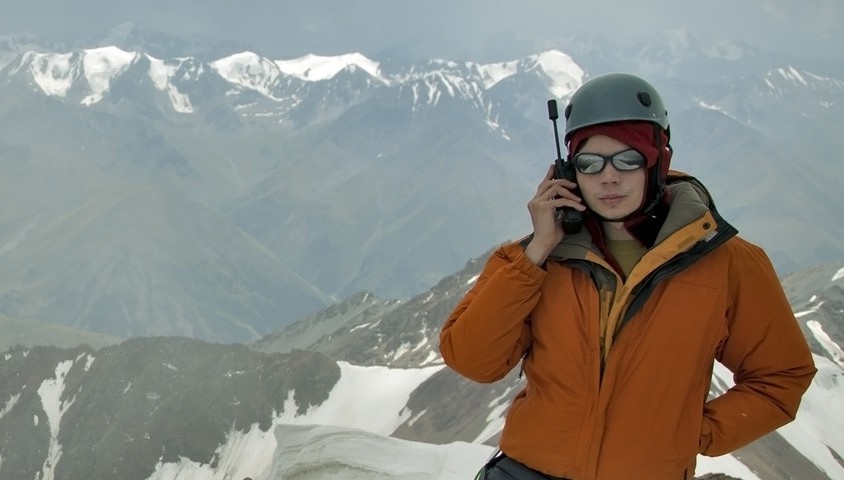In bush communications, we’ve come a long way from smoke signals and coo-ee (although, that isn’t to say they’re completely obsolete). For years, appropriate survival gear has included emergency beacons and/or a satellite phones.
These technologies provide the adventurer with a sense of security, a safety net should ‘just in case’ scenarios arise. Unfortunately, that fact has also restricted their potential for use in the wild.
Most commonly, a PLB will be kept on the person at all times when bushwalking, skiing or paddling. This is very much a go-to emergency device as they are relatively inexpensive to purchase and maintain. The downside with these devices only becomes apparent when the adventurer actually needs to use it. Anecdotally, there are stories of people who, once finding themselves in an emergency situation, become too anxious and overwhelmed to be able to easily trigger their beacon. Once they do, they must face paying for cost of search and rescue services.
For many, this has made the satellite phone appear to be an attractive option. Yet these too have always been associated with high costs. Not only is there a cost associated with the hardware, most satellite providers charge a recurring ‘subscription fee’ which doesn’t even include the cost of usage. Call costs are then applied once the satellite phone is used.
Kate Montgomery, director of channel strategy (enterprise) for satellite provider Inmarsat, believes that the market has shifted dramatically in recent years in favour of a more consumer-friendly satellite communications model.
“Inmarsat is now onto its fourth generation of geostationary satellites, the i4’s, which we use to distribute our Broadband Global Area Network. We’ve been running this particular system since 2005 and in that time the market has evolved rapidly.”
Inmarsat has traditionally serviced maritime search and rescue operations with satellite communications solutions with its four satellites. The fact that those satellites are geostationary means that they can easily be located and transmitted to (unless there’s a mountain or some other significant amount of rock and metal between you and the satellites).
“In recent years we’ve found a great deal of traction with our IsatPhone in the casual user market. In leveraging our existing infrastructure we found we could offer more flexible contracts and even prepaid satellite phone deals, which are much more useful for someone who might only spend a few weeks or months in the wilderness.”
Wild interviewed Montgomery alongside Neil Jamieson, sales manager for Applied Satellite Technology (AST) Australia – a retailer for Inmarsat and other satellite devices.
Ostensibly, the purpose of the interview was to communicate the release of the next iteration of the IsatPhone, the IsatPhone 2. However, there was another announcement that begged to be investigated further.
“The IsatHub is essentially a WiFi hub device that uses Inmarsat’s BGAN service to connect up to ten devices at once,” Jamieson explained.
Last week, Wild presented a use case for the IsatHub, written by managing director for AST Australia, Richard Coston.
With the affordability of the IsatPhone, users have been able to consider the satellite phone as something more than a ‘just in case’ device. With the advent of the IsatHub, we can only imagine that satellite communications are on the verge of breaking into the realms of social communications.
“It’s great when you have a friend or family member send you a photo from their latest adventure,” Jamieson said, “but it means so much more when they’re still out there doing it, rather than sending you that photo on the way home.”
The IsatHub – and similar devices – allow people the ability to check email, log on to Facebook – and whatever else – with near-broadband speeds (348 kilobytes per second, in fact).
That’s not to say the device will necessarily be considered affordable by the average adventurer. While satellite phone charges are now approaching $1 per minute, data download and upload rates via satellite can still be prohibitive.
“We work hard to assist our customers to limit their data usage to include only those things they wish to pay for,” said Jamieson. “Not only do we provide a firewall service at the network level, the customer maintains full control via an app they download to their smartphone. They choose who can connect to the hub, as well as what they can access and so on.”
Ultimately, much of this would cause some anxiety for anyone with a more traditional approach to outdoor experiences, where nature is there to be communed with rather than the rest of humanity. Yet these kinds of technologies may actually be just the solution those in the outdoors industry have been searching for this past decade or more. Here is a device that allows professionals, families and students to go to places they would feel less than comfortable going without a means of reliable communication.
With the dawn of the ‘always-connected’ adventurer, we might hope to see participation in multi-day outdoor activities beginning to increase.
In our next installment of this series, we’ll look more closely at the differences between the two major satellite communications providers, Inmarsat and Iridium, as well as the products and pricing structures they offer the Australian market.



